Salon
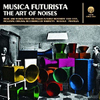 With the release of Musica Futuristica, LTM introduces their new sub-label Salon and presents a companion volume to Futurism & Dada Reviewed.This compilation includes all but one of the of Futurist tracks on theabove-mentioned CD and adds a variety of others from both major andminor players in the Futurist movement. As the result of a thoroughremastering of the archived originals, the quality of the recordings onMusica Futuristica is much better than on Futurism & Dada Reviewed.The disc opens with F.T. Marinetti reading the "Definition of Futurism"and calling for the use of sound and noise as weapons againsttraditionalism. For Marinetti and other Futurists, the roar of a carwas more beautiful than anything by Mozart or Beethoven. This desirefor noise can be found in "The Awakening of a City" by Luigi Russolo.In this composition, Russolo attempts to portray the dawning of a newcity, complete with its industrial sirens and abundant factorywhistles. Performance of the piece was initially banned in Italy forfear that it would "likely trigger a public disturbance." The droningnature of the work recalls the compositions of Pierre Henry and otherpractitioners of musique concrète, except for the fact that it predatesHenry by a few decades. The most interesting piece on the album isMarinetti's "Five Radio Sintesi," a series of five pieces thatincorporate found sound and make extensive use of silence. Dating from1933, the juxtaposition of disparate sound elements such as Americanfolk music, the sound of a stadium crowd, the hum of a car, and anoperatic vocal solo highlight the Futurists' desire to point out thebeauty to be find in the banal nature of quotidian existence. With theoutbreak of the Second World War, the Futurist movement faded as morepressing issues came to play in European society and the sonicexperiments of Marinetti, Russolo and others were not allowed to befurther explored. However, as Musica Futuristica demonstrates,the influence of these works can be seen across multiple genres, frommodern composition to avant-rock and electronica.
With the release of Musica Futuristica, LTM introduces their new sub-label Salon and presents a companion volume to Futurism & Dada Reviewed.This compilation includes all but one of the of Futurist tracks on theabove-mentioned CD and adds a variety of others from both major andminor players in the Futurist movement. As the result of a thoroughremastering of the archived originals, the quality of the recordings onMusica Futuristica is much better than on Futurism & Dada Reviewed.The disc opens with F.T. Marinetti reading the "Definition of Futurism"and calling for the use of sound and noise as weapons againsttraditionalism. For Marinetti and other Futurists, the roar of a carwas more beautiful than anything by Mozart or Beethoven. This desirefor noise can be found in "The Awakening of a City" by Luigi Russolo.In this composition, Russolo attempts to portray the dawning of a newcity, complete with its industrial sirens and abundant factorywhistles. Performance of the piece was initially banned in Italy forfear that it would "likely trigger a public disturbance." The droningnature of the work recalls the compositions of Pierre Henry and otherpractitioners of musique concrète, except for the fact that it predatesHenry by a few decades. The most interesting piece on the album isMarinetti's "Five Radio Sintesi," a series of five pieces thatincorporate found sound and make extensive use of silence. Dating from1933, the juxtaposition of disparate sound elements such as Americanfolk music, the sound of a stadium crowd, the hum of a car, and anoperatic vocal solo highlight the Futurists' desire to point out thebeauty to be find in the banal nature of quotidian existence. With theoutbreak of the Second World War, the Futurist movement faded as morepressing issues came to play in European society and the sonicexperiments of Marinetti, Russolo and others were not allowed to befurther explored. However, as Musica Futuristica demonstrates,the influence of these works can be seen across multiple genres, frommodern composition to avant-rock and electronica.
 With the release of Musica Futuristica, LTM introduces their new sub-label Salon and presents a companion volume to Futurism & Dada Reviewed.This compilation includes all but one of the of Futurist tracks on theabove-mentioned CD and adds a variety of others from both major andminor players in the Futurist movement. As the result of a thoroughremastering of the archived originals, the quality of the recordings onMusica Futuristica is much better than on Futurism & Dada Reviewed.The disc opens with F.T. Marinetti reading the "Definition of Futurism"and calling for the use of sound and noise as weapons againsttraditionalism. For Marinetti and other Futurists, the roar of a carwas more beautiful than anything by Mozart or Beethoven. This desirefor noise can be found in "The Awakening of a City" by Luigi Russolo.In this composition, Russolo attempts to portray the dawning of a newcity, complete with its industrial sirens and abundant factorywhistles. Performance of the piece was initially banned in Italy forfear that it would "likely trigger a public disturbance." The droningnature of the work recalls the compositions of Pierre Henry and otherpractitioners of musique concrète, except for the fact that it predatesHenry by a few decades. The most interesting piece on the album isMarinetti's "Five Radio Sintesi," a series of five pieces thatincorporate found sound and make extensive use of silence. Dating from1933, the juxtaposition of disparate sound elements such as Americanfolk music, the sound of a stadium crowd, the hum of a car, and anoperatic vocal solo highlight the Futurists' desire to point out thebeauty to be find in the banal nature of quotidian existence. With theoutbreak of the Second World War, the Futurist movement faded as morepressing issues came to play in European society and the sonicexperiments of Marinetti, Russolo and others were not allowed to befurther explored. However, as Musica Futuristica demonstrates,the influence of these works can be seen across multiple genres, frommodern composition to avant-rock and electronica.
With the release of Musica Futuristica, LTM introduces their new sub-label Salon and presents a companion volume to Futurism & Dada Reviewed.This compilation includes all but one of the of Futurist tracks on theabove-mentioned CD and adds a variety of others from both major andminor players in the Futurist movement. As the result of a thoroughremastering of the archived originals, the quality of the recordings onMusica Futuristica is much better than on Futurism & Dada Reviewed.The disc opens with F.T. Marinetti reading the "Definition of Futurism"and calling for the use of sound and noise as weapons againsttraditionalism. For Marinetti and other Futurists, the roar of a carwas more beautiful than anything by Mozart or Beethoven. This desirefor noise can be found in "The Awakening of a City" by Luigi Russolo.In this composition, Russolo attempts to portray the dawning of a newcity, complete with its industrial sirens and abundant factorywhistles. Performance of the piece was initially banned in Italy forfear that it would "likely trigger a public disturbance." The droningnature of the work recalls the compositions of Pierre Henry and otherpractitioners of musique concrète, except for the fact that it predatesHenry by a few decades. The most interesting piece on the album isMarinetti's "Five Radio Sintesi," a series of five pieces thatincorporate found sound and make extensive use of silence. Dating from1933, the juxtaposition of disparate sound elements such as Americanfolk music, the sound of a stadium crowd, the hum of a car, and anoperatic vocal solo highlight the Futurists' desire to point out thebeauty to be find in the banal nature of quotidian existence. With theoutbreak of the Second World War, the Futurist movement faded as morepressing issues came to play in European society and the sonicexperiments of Marinetti, Russolo and others were not allowed to befurther explored. However, as Musica Futuristica demonstrates,the influence of these works can be seen across multiple genres, frommodern composition to avant-rock and electronica. - F.T. Marinetti - Definition of Futurism
- F.T. Marinetti - Five Radio Sintesi
- Luigi Russolo - The Awakening of a City


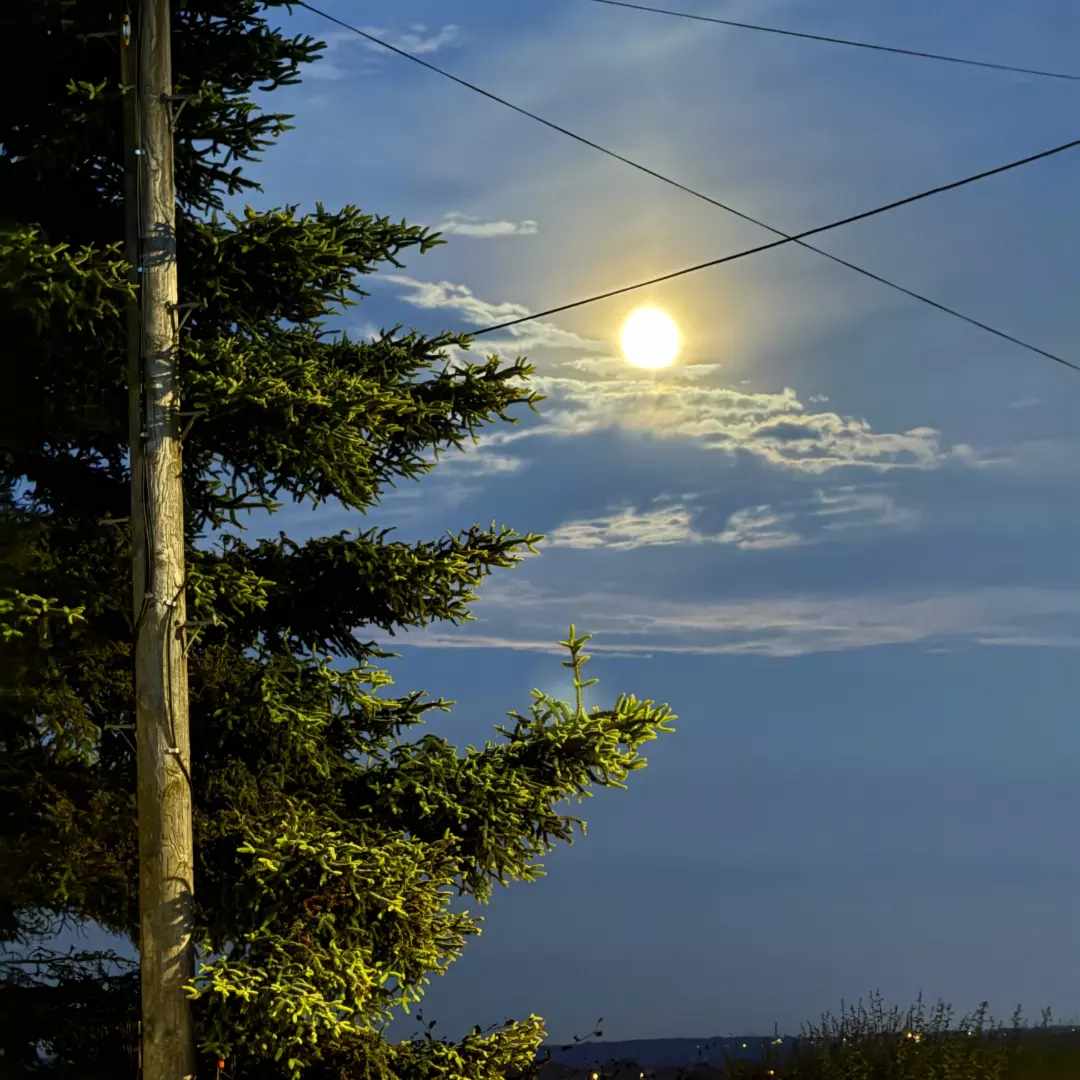
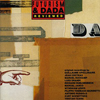 Released by LTM in 2000, Futurism & Dada Revieweddocuments the sonic experiments of these two respective art movements.While the Dadaists were primarily concerned with visual art and theFuturists with politics and literature, both groups were interested inthe burgeoning technology of audio reproduction and the possibilitiesit offered for revolutionary artistic creation. This compilation ofarchival recordings presents a wide variety of the Dada and Futristaudio projects, from sound poems and avant-garde compositions torecordings of interviews and manifestoes by major proponents of bothmovements. Unfortunately, due to the primitive recording technologyavailable during the first half of the 20th century, the poor qualityof these recordings is a constant reminder of the "avant-garde" natureof the work. As far as Futurist compositions on the compilation, all ofthe tracks on Futurism & Dada Reviewed can be found in remastered form on the recent Musica Futuristica,with the exception of Luigi Grandi's "Cavalli + Acciaio." On the Dadaside, the disc presents recordings of poems by Appolinaire, TristanTzara and Jean Cocteau, along with two compositions written by KurtSchwitters and Marcel Duchamp. Duchamp, known as one of the mostinfluential poets of the last century, was also an accomplishedcomposer and his composition "La Mariée mise a nu par ses Celibataires,même" shares its title with one of his most famous paintings. Themethod of composition employed by Duchamp foreshadows those to be usedlater by artists such as John Cage in their use of indeterminatecompositional techniques. Duchamp took numerous balls, assigning eachof them various notes, poured them into a funnel, and then allowed themto drop into the open trucks of a toy train in order to determine thetonal sequence of the composition. While the original version of thiscomposition was originally intended for piano, a new version isincluded on this compilation where the hammers of a piano are replacedwith a small rotary disc that vibrates the strings instead of strikingthem. Kurt Schwitter's composition "Die Sonata In Urlauten" employs thevoice in a variety in nonsensical utterances, song, and child-speak.Listening to Schwitters, it is easy to hear the influence of works likethis on Mike Patton and other contemporary vocal performers. While thequality of the recordings leaves a bit to offer, this compilation isstill of interest to anyone interested in art and music history andoffers a glimpse at groundbreaking compositions that opened up thepossibilities still being explored by contemporary composers andperformers.
Released by LTM in 2000, Futurism & Dada Revieweddocuments the sonic experiments of these two respective art movements.While the Dadaists were primarily concerned with visual art and theFuturists with politics and literature, both groups were interested inthe burgeoning technology of audio reproduction and the possibilitiesit offered for revolutionary artistic creation. This compilation ofarchival recordings presents a wide variety of the Dada and Futristaudio projects, from sound poems and avant-garde compositions torecordings of interviews and manifestoes by major proponents of bothmovements. Unfortunately, due to the primitive recording technologyavailable during the first half of the 20th century, the poor qualityof these recordings is a constant reminder of the "avant-garde" natureof the work. As far as Futurist compositions on the compilation, all ofthe tracks on Futurism & Dada Reviewed can be found in remastered form on the recent Musica Futuristica,with the exception of Luigi Grandi's "Cavalli + Acciaio." On the Dadaside, the disc presents recordings of poems by Appolinaire, TristanTzara and Jean Cocteau, along with two compositions written by KurtSchwitters and Marcel Duchamp. Duchamp, known as one of the mostinfluential poets of the last century, was also an accomplishedcomposer and his composition "La Mariée mise a nu par ses Celibataires,même" shares its title with one of his most famous paintings. Themethod of composition employed by Duchamp foreshadows those to be usedlater by artists such as John Cage in their use of indeterminatecompositional techniques. Duchamp took numerous balls, assigning eachof them various notes, poured them into a funnel, and then allowed themto drop into the open trucks of a toy train in order to determine thetonal sequence of the composition. While the original version of thiscomposition was originally intended for piano, a new version isincluded on this compilation where the hammers of a piano are replacedwith a small rotary disc that vibrates the strings instead of strikingthem. Kurt Schwitter's composition "Die Sonata In Urlauten" employs thevoice in a variety in nonsensical utterances, song, and child-speak.Listening to Schwitters, it is easy to hear the influence of works likethis on Mike Patton and other contemporary vocal performers. While thequality of the recordings leaves a bit to offer, this compilation isstill of interest to anyone interested in art and music history andoffers a glimpse at groundbreaking compositions that opened up thepossibilities still being explored by contemporary composers andperformers.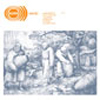 Masters of the stomach-churning, intestine-voiding, subharmonicfrequencies, Steven O'Malley and Greg Anderson return for a sequel tolast year's impressive White 1, not surprisingly entitled White 2.Much has been made of Anderson and O'Malley's transmogrification andmutation of their Nordic black metal influences into the slow-motion,doom-laden minimalism of their recordings as Sunn O))). Never mind thatit isn't a very original idea, having previously been put forth bySeattle ambient sludge-core band Earth. Listen to the track "Ripped onFascist Ideas" from Earth's live album Sunn Amps and Smashed Guitarsfor the origin of Sunn O)))'s sonic palette. To their credit, however,Sunn O))) have relentlessly pursued this aesthetic, going several stepsfurther with their use of variable-speed tape mutations and othersynthetic technology to create the lowest low-end feasible, with thepossible exception of that lowrider that cruises through myneighborhood in the middle of the night blasting bone-rattling Miamibass. On White 2, they choose not to repeat the guest-vocalist tactics of the first Whitealbum, in favor of creating three lengthy, horror movie soundscapesthat willfully test the limits of the stereo playback system, even asthey revel in fascinatingly tangible textures. Although they approachtheir compositions from a completely different perspective, Sunn O)))arrive in the same general "dark ambient" territory as Lustmord orLull, spinning vaguely cinematic post-industrial abstractions in whichmood is the primary attraction. The fourteen doom-laden minutes of"Hell-O)))-Ween" are the most prototypical of the band: a series ofbrutally plodding riffs that are allowed to reverberate, slowlybuilding up compounding layers distortion and bass rumble like slowlycoagulating amber dripping down a prehistoric tree. It's crushing anddowtrodden, but it's nothing compared to the next two epic tracks ofdesolation and fear. "bassAliens" explores the lonely, claustrophobiccorners just out of sight on Ridley Scott's Nostromo, hauntedby the faint specter of menace, distorted subharmonic rumbles thatsputter and mutate, spewing foul plumes of hydrochloric acid. What'sremarkable about this track is the effective usage of higher-frequencytones and midrange atmospheric guitar plonks, which, juxtaposed withthe jarring bass rumbles, create a vivid sound environment unmatched onSunn O)))'s previous records. The album concludes with the 25-minuteepic "Decay 2 (Nihil's Maw)," where Anderson and O'Malley are joined bylegendary Mayhem vocalist Attila Csihar for a frightening peak into thevoid. Listening to this track on an expensive pair of headphones islike staring into the empty, yawning chasm of oblivion, a screaminghole that sucks up sound and life itself. Dislocated from anyrecognizable sound source other than Csihar's multi-layered growls,shrieks and Odinic chants, a listener has no choice but to floattowards the soul-shredding epicenter of the black hole, where ancientdemonic forces gather and align to prepare for the final descent tozero.
Masters of the stomach-churning, intestine-voiding, subharmonicfrequencies, Steven O'Malley and Greg Anderson return for a sequel tolast year's impressive White 1, not surprisingly entitled White 2.Much has been made of Anderson and O'Malley's transmogrification andmutation of their Nordic black metal influences into the slow-motion,doom-laden minimalism of their recordings as Sunn O))). Never mind thatit isn't a very original idea, having previously been put forth bySeattle ambient sludge-core band Earth. Listen to the track "Ripped onFascist Ideas" from Earth's live album Sunn Amps and Smashed Guitarsfor the origin of Sunn O)))'s sonic palette. To their credit, however,Sunn O))) have relentlessly pursued this aesthetic, going several stepsfurther with their use of variable-speed tape mutations and othersynthetic technology to create the lowest low-end feasible, with thepossible exception of that lowrider that cruises through myneighborhood in the middle of the night blasting bone-rattling Miamibass. On White 2, they choose not to repeat the guest-vocalist tactics of the first Whitealbum, in favor of creating three lengthy, horror movie soundscapesthat willfully test the limits of the stereo playback system, even asthey revel in fascinatingly tangible textures. Although they approachtheir compositions from a completely different perspective, Sunn O)))arrive in the same general "dark ambient" territory as Lustmord orLull, spinning vaguely cinematic post-industrial abstractions in whichmood is the primary attraction. The fourteen doom-laden minutes of"Hell-O)))-Ween" are the most prototypical of the band: a series ofbrutally plodding riffs that are allowed to reverberate, slowlybuilding up compounding layers distortion and bass rumble like slowlycoagulating amber dripping down a prehistoric tree. It's crushing anddowtrodden, but it's nothing compared to the next two epic tracks ofdesolation and fear. "bassAliens" explores the lonely, claustrophobiccorners just out of sight on Ridley Scott's Nostromo, hauntedby the faint specter of menace, distorted subharmonic rumbles thatsputter and mutate, spewing foul plumes of hydrochloric acid. What'sremarkable about this track is the effective usage of higher-frequencytones and midrange atmospheric guitar plonks, which, juxtaposed withthe jarring bass rumbles, create a vivid sound environment unmatched onSunn O)))'s previous records. The album concludes with the 25-minuteepic "Decay 2 (Nihil's Maw)," where Anderson and O'Malley are joined bylegendary Mayhem vocalist Attila Csihar for a frightening peak into thevoid. Listening to this track on an expensive pair of headphones islike staring into the empty, yawning chasm of oblivion, a screaminghole that sucks up sound and life itself. Dislocated from anyrecognizable sound source other than Csihar's multi-layered growls,shrieks and Odinic chants, a listener has no choice but to floattowards the soul-shredding epicenter of the black hole, where ancientdemonic forces gather and align to prepare for the final descent tozero.  As somewhat of an unofficial tenth anniversary celebration of thegroup, Jaga Jazzist have decided to reissued their pre-Ninja Tune 1998mini-LP, which has quickened my completist heart. Previously availableonly within their native Norway, or as a hefty-priced import (if youcould find it), the re-release of Magazinenow has wider distribution thanks in part to the success of the group'sNorth American releases and subsequent tour. The complexity of thecompositions and musicianship on this disc blows my mind, knowing thatthe majority of the group were still in their late teens when it wasrecorded. Such compositions and performances sound like that ofseasoned players at least a generation or two ahead. The crisp, liveelectro-styled dance bass and drums of "Jaga Ist Zu Hause" pulse alongfor soaring melodies handled by unison xylophone and soprano sax.Normally, I have an aversion to modern day soprano sax performances,but I'm willing to overlook and even embrace it in this context. Thebroken-up swing and shimmering Fender Rhodes on "Swedish Take Away(Live)" recalls the popular, yet subtle 70s action flick soundtrackstyle, with a brief and tasteful drum solo. The cheerful "Seems To Me"is the first track I've heard of any of Jaga Jazzist's stuff featuringvocals, which are accompanied by acoustic guitar and tastefullypeppered with glockenspiel and smooth horns. For the bonus tracks,"Serafin I Jungelen" re-mixes source material from an even earlierrelease to an electronic dance pulse, while "Magazine Part I & II"messes with the said releases tracks in a very open format. Havinggarnered a fair amount of acclaim outside of their homeland, I'mlooking forward to additional re-releases of earlier material, whichwill continue to have me thinking that I'm an old fart based on themusical chops that I've got.
As somewhat of an unofficial tenth anniversary celebration of thegroup, Jaga Jazzist have decided to reissued their pre-Ninja Tune 1998mini-LP, which has quickened my completist heart. Previously availableonly within their native Norway, or as a hefty-priced import (if youcould find it), the re-release of Magazinenow has wider distribution thanks in part to the success of the group'sNorth American releases and subsequent tour. The complexity of thecompositions and musicianship on this disc blows my mind, knowing thatthe majority of the group were still in their late teens when it wasrecorded. Such compositions and performances sound like that ofseasoned players at least a generation or two ahead. The crisp, liveelectro-styled dance bass and drums of "Jaga Ist Zu Hause" pulse alongfor soaring melodies handled by unison xylophone and soprano sax.Normally, I have an aversion to modern day soprano sax performances,but I'm willing to overlook and even embrace it in this context. Thebroken-up swing and shimmering Fender Rhodes on "Swedish Take Away(Live)" recalls the popular, yet subtle 70s action flick soundtrackstyle, with a brief and tasteful drum solo. The cheerful "Seems To Me"is the first track I've heard of any of Jaga Jazzist's stuff featuringvocals, which are accompanied by acoustic guitar and tastefullypeppered with glockenspiel and smooth horns. For the bonus tracks,"Serafin I Jungelen" re-mixes source material from an even earlierrelease to an electronic dance pulse, while "Magazine Part I & II"messes with the said releases tracks in a very open format. Havinggarnered a fair amount of acclaim outside of their homeland, I'mlooking forward to additional re-releases of earlier material, whichwill continue to have me thinking that I'm an old fart based on themusical chops that I've got. The Gomco Clamp is a special medical device created to facilitate the circumcision of infant boys, a bell-shaped device over which the shaft skin of the penis is stretched before a circular incision is made. On the first track of Thighpaulsandra's new album, tastefully entitled Rape Scene, the eccentric Welshman hints at a joyful misuse of this medical device, and the mind reels at the sadomasochistic possibilities inherent in such a suggestion.
The Gomco Clamp is a special medical device created to facilitate the circumcision of infant boys, a bell-shaped device over which the shaft skin of the penis is stretched before a circular incision is made. On the first track of Thighpaulsandra's new album, tastefully entitled Rape Scene, the eccentric Welshman hints at a joyful misuse of this medical device, and the mind reels at the sadomasochistic possibilities inherent in such a suggestion.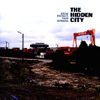 Sub Rosa has a habit of releasing highly conceptual compilations, whereoften times the ingenuity of a particular track or artist gets lost inthe maintenance of vague thematics or some all-too-constrictive"grounds" for collection. The Hidden Cityis no exception, though the level field and loose connectivity of thefeatured artists seems actually to work in favor of the theme: aportrait of Göteborg, the complexity of a city that entered the modernera as one of Sweden's most established port cities, liberalized andglobalized long before the rest of its country and much of Europe, onlyto be swiftly clouded over as Copenhagen and Oslo rose to meet the newcentury's demands. Göteborg's "enlightened," early-global statusapparently outlived its economic promise, and the place has sincebecome a haven for liberal thinkers, artists, and the odd manufacturingmogul (Volvo). There exists here a strange middle-ground between oldworld textbook civilizations and the alienating modernist upstarts;Göteborg survives with pieces of both, a diversity duly reflected inthe city's musicians, poets, and sound-artists. These "sound portraits"are not simple inspiration pieces, but reflections and meditations onactual places within the city, often linked to particular addresses.They create an uneven mosaic of sound in which not one is allowedsupremacy or any definite version of Göteborg's confused history.Pieces of the land's proud past and contemporary persistence comethrough in the orchestral work of composer Peter Hansen, whose "WinterAir" locates an elegance and Norse melancholy that feel like fixtureshovering oblivious to the city's shifting traditions. By contrast,local sound artist Johannes Heldén's contribution, aptly-titled"Bäckegatan 36," incorporates field captures and other incidentalsounds in a gem of dirge-like bedroom electronics, challenging theauthenticity of isolationism and the assumed consistencies connectedwith something as simple as a "fixed" address. Paul Bothén, anothersound artist, creates "Oh Lord" through a collage of recordings from aSwedish barroom performance of a modified gospel tune from the AmericanSouth. His layered cuts create a chilling, gothic atmosphere as muchrelated to Göteborg's uniquely "informed" brand of nationalism as tothe city's more recent financial anxiety ("Oh Lord, won't you buy me acolor TV?"). Elsewhere, the new guard of stealthy, dub-infected Germanelectronica gets represented by works from Mapstation and Göteborgresident Anders Ilar, each more subdued than the artist's usual,perhaps in reaction to Göteborg's own restless quiet. Christina Kubischand Alva Noto come through with two of the more aurally pleasingcontributions on the disc, both technically unimpressive pieces that dolittle more than add to the dreamy, lost city feel of the whole. Thereal pleasures of The Hidden City, though, come from watchingthese well known out-of-towners compete with the singular visions oflocal musicians, including works by Henrik Rylander and Sheriff, andthe poets Anna Eriksson and Fredrik Nyberg. These are the artists thatbring Göteborg to life, with a local color of innumerable shades,revealing the hidden treasure that such a compilation boasts.
Sub Rosa has a habit of releasing highly conceptual compilations, whereoften times the ingenuity of a particular track or artist gets lost inthe maintenance of vague thematics or some all-too-constrictive"grounds" for collection. The Hidden Cityis no exception, though the level field and loose connectivity of thefeatured artists seems actually to work in favor of the theme: aportrait of Göteborg, the complexity of a city that entered the modernera as one of Sweden's most established port cities, liberalized andglobalized long before the rest of its country and much of Europe, onlyto be swiftly clouded over as Copenhagen and Oslo rose to meet the newcentury's demands. Göteborg's "enlightened," early-global statusapparently outlived its economic promise, and the place has sincebecome a haven for liberal thinkers, artists, and the odd manufacturingmogul (Volvo). There exists here a strange middle-ground between oldworld textbook civilizations and the alienating modernist upstarts;Göteborg survives with pieces of both, a diversity duly reflected inthe city's musicians, poets, and sound-artists. These "sound portraits"are not simple inspiration pieces, but reflections and meditations onactual places within the city, often linked to particular addresses.They create an uneven mosaic of sound in which not one is allowedsupremacy or any definite version of Göteborg's confused history.Pieces of the land's proud past and contemporary persistence comethrough in the orchestral work of composer Peter Hansen, whose "WinterAir" locates an elegance and Norse melancholy that feel like fixtureshovering oblivious to the city's shifting traditions. By contrast,local sound artist Johannes Heldén's contribution, aptly-titled"Bäckegatan 36," incorporates field captures and other incidentalsounds in a gem of dirge-like bedroom electronics, challenging theauthenticity of isolationism and the assumed consistencies connectedwith something as simple as a "fixed" address. Paul Bothén, anothersound artist, creates "Oh Lord" through a collage of recordings from aSwedish barroom performance of a modified gospel tune from the AmericanSouth. His layered cuts create a chilling, gothic atmosphere as muchrelated to Göteborg's uniquely "informed" brand of nationalism as tothe city's more recent financial anxiety ("Oh Lord, won't you buy me acolor TV?"). Elsewhere, the new guard of stealthy, dub-infected Germanelectronica gets represented by works from Mapstation and Göteborgresident Anders Ilar, each more subdued than the artist's usual,perhaps in reaction to Göteborg's own restless quiet. Christina Kubischand Alva Noto come through with two of the more aurally pleasingcontributions on the disc, both technically unimpressive pieces that dolittle more than add to the dreamy, lost city feel of the whole. Thereal pleasures of The Hidden City, though, come from watchingthese well known out-of-towners compete with the singular visions oflocal musicians, including works by Henrik Rylander and Sheriff, andthe poets Anna Eriksson and Fredrik Nyberg. These are the artists thatbring Göteborg to life, with a local color of innumerable shades,revealing the hidden treasure that such a compilation boasts.  A celebration of the highly regarded Kompakt label's hundredth release,this decadent and incestuous affair spans two lengthy discs featuringtheir stable of artists remixing one another. Playing out like theaural equivalent of a hip party that you geeks never get invited to,the listener travels regularly between the main dancefloor and chilloutroom inside some strange yet enthralling post-rave environment.Electronic music pioneers The Orb, represented here as Dr. AlexPaterson and Thomas Fehlmann presumably, open the first disc with agentle reminder to Kompakt's stable of hungry young ambient producers:you'll never be as good at this as we are. In their dense rework of UlfLohmann's "Because Before," flowing soundscapes and hidden rhythmsengage the ears, spending the final minute and a half with a subtlydubby feel. Tackling Reinhard Voigt's "Zu Dicht Dran," DJ Koze emergesvictorious with an irresistable floorfiller with buzzing synth leads,dirty effects, and a hard steady techno beat. Following in that style,Sascha Funke's bleepy and, yes, funky version of Thomas Fehlmann's"Radeln" (known by fans of Kompakt's Totalseries) presents a radical and clubby take on the original's quiethead-nodding grooves. Moving along, Joachim Spieth's near-industrialremix of M. Mayer's "17&4" contrasts greatly with Japanese producerKaito's melodic approach to the synthpop stylings of current scenesterfavorite Superpitcher. The CD closes with the Dettinger remix of CloserMusik's "One Two Three No Gravity", an overflowing cinematic cup ofgorgeous pads, gentle guitar plucking, and bizarrely emotive yetmeaningless vocal snippets. Disc Two features the guiltiest pleasure ofthe entire collection, a severely and dare-I-say embarassinglyAuto-Tuned sing-song remix of Freiland called "Frei/Hot Love" done byJustus Kohncke featuring Meloboy. The track's grating quality ismatched only by its unfortune catchiness, leaving it destined for thesetlists of merciless and quirky DJs alike. Fortunately, Jurgen Paapeand former Force Tracks' mainstays SCSI 9 and bring some order back tothe dancefloor with their versions of Schaeben & Voss' "The WorldIs Crazy" and Lawrence's "Teaser" respectively. Jonas Bering, whoselast album made my Top 10 list in 2003, offers a pleasant reworking ofDettinger's "Intershop" that clicks along dreamily, albeitrepetitively, while Ulf Lohmann's entrancing take on the same track isfar more minimal and droning. Hannes Teichmann wraps things up on aneerie note by remixing Markus Guenter's "In Moll," filling the speakerswith over seven minutes of gurgling noises, degrading sounds, and acorroded somewhat buried melody. In summation, this double-disccompilation is REQUIRED LISTENING for anyone out there who considersthemselves a fan of techno, house, or ambient music today. If The Orbthinks Kompakt is cool, then you should too.
A celebration of the highly regarded Kompakt label's hundredth release,this decadent and incestuous affair spans two lengthy discs featuringtheir stable of artists remixing one another. Playing out like theaural equivalent of a hip party that you geeks never get invited to,the listener travels regularly between the main dancefloor and chilloutroom inside some strange yet enthralling post-rave environment.Electronic music pioneers The Orb, represented here as Dr. AlexPaterson and Thomas Fehlmann presumably, open the first disc with agentle reminder to Kompakt's stable of hungry young ambient producers:you'll never be as good at this as we are. In their dense rework of UlfLohmann's "Because Before," flowing soundscapes and hidden rhythmsengage the ears, spending the final minute and a half with a subtlydubby feel. Tackling Reinhard Voigt's "Zu Dicht Dran," DJ Koze emergesvictorious with an irresistable floorfiller with buzzing synth leads,dirty effects, and a hard steady techno beat. Following in that style,Sascha Funke's bleepy and, yes, funky version of Thomas Fehlmann's"Radeln" (known by fans of Kompakt's Totalseries) presents a radical and clubby take on the original's quiethead-nodding grooves. Moving along, Joachim Spieth's near-industrialremix of M. Mayer's "17&4" contrasts greatly with Japanese producerKaito's melodic approach to the synthpop stylings of current scenesterfavorite Superpitcher. The CD closes with the Dettinger remix of CloserMusik's "One Two Three No Gravity", an overflowing cinematic cup ofgorgeous pads, gentle guitar plucking, and bizarrely emotive yetmeaningless vocal snippets. Disc Two features the guiltiest pleasure ofthe entire collection, a severely and dare-I-say embarassinglyAuto-Tuned sing-song remix of Freiland called "Frei/Hot Love" done byJustus Kohncke featuring Meloboy. The track's grating quality ismatched only by its unfortune catchiness, leaving it destined for thesetlists of merciless and quirky DJs alike. Fortunately, Jurgen Paapeand former Force Tracks' mainstays SCSI 9 and bring some order back tothe dancefloor with their versions of Schaeben & Voss' "The WorldIs Crazy" and Lawrence's "Teaser" respectively. Jonas Bering, whoselast album made my Top 10 list in 2003, offers a pleasant reworking ofDettinger's "Intershop" that clicks along dreamily, albeitrepetitively, while Ulf Lohmann's entrancing take on the same track isfar more minimal and droning. Hannes Teichmann wraps things up on aneerie note by remixing Markus Guenter's "In Moll," filling the speakerswith over seven minutes of gurgling noises, degrading sounds, and acorroded somewhat buried melody. In summation, this double-disccompilation is REQUIRED LISTENING for anyone out there who considersthemselves a fan of techno, house, or ambient music today. If The Orbthinks Kompakt is cool, then you should too.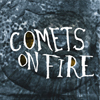 Although I enjoyed Comets on Fire's self-titled debut and its follow up, 2001's Field Recordings from the Sun, I could never have expected the pure, unadulterated rock perfection that is Blue Cathedral. It's the megalithic, all-cylinders-firing psych-rock masterpiece that the band only hinted at with their first two albums.
Although I enjoyed Comets on Fire's self-titled debut and its follow up, 2001's Field Recordings from the Sun, I could never have expected the pure, unadulterated rock perfection that is Blue Cathedral. It's the megalithic, all-cylinders-firing psych-rock masterpiece that the band only hinted at with their first two albums. Even the thought of a two-track, solo guitar release from this AcidMothers Temple founder may have more than a few people reaching for the"wank" button; however, this disc shows a side of Kawabata that usuallyisn't lucky enough to escape the sludge and heavy syrup psych hisgroup's been churning out since the mid-90's. Here are two 30+ minuteimprovs, one acoustic and one electric, both packed with enough reverband delay to make Kawabata's bandmates proud, but both also miles awayfrom the elastic freakouts and deliberate bombast that characterizeAMT. Created just after a trip to Sardinia, where Kawabata claims tohave undergone a spiritual awakening, these pieces are exactly the kindof weightless, shimmering psychedelia that I wish he'd startintegrating within the AMT repertoire. They immediately suggest thosemoments of rural bliss, of remote escape, water and sky, attempted byso many acid-led seekers but realized only by a happy, unsuspectingfew. The first begins in the guitarist's room where simple noteclusters fall into walls of their own reverb and thin blankets of amphum, as if shaken from larger projections of themselves. From here theacoustic begins to climb slow, billowing figures, cyclical and frail,recalling the quieter sides of the already quiet Richard Youngs, JimO'Rourke, and even late-period Fahey whose own love affair with thereverb box seems almost conservative by comparison. Kawabata divideshis single guitar's sound into three separate systems, binding spindlythree-note fragments to columns of their own piling, delayed resonance,rising as if the ruins of some ancient holy space left to loss andvegetation. By the end of this first track, the guitarist seems contentto let even these magical images go, whipping a particularlymelancholic chord progression into a disintegrating ascent, its layersof playback, multiple reverb, and delay assembling a massive shimmeringwaveform, light as breath and coming on without the exhaustion thataccompanies so many AMT climaxes. Rather, Kawabata creates anopen-ended devotional, a piece that truly feels rooted in moments oftranscendence but whose subtlety of flow and improvised constructionkeep it from the force-feeding often associated with his work. For thedisc's title track, he essentially extends the peaking drone from thefirst acoustic piece, this time with an electric guitar and a similararsenal of simple delay and reverb effects. The shift to electricallows for a shimmering structure even more crystalline andotherworldly, mounted by piles of clear feedback that lead ahead-cleaning 45 min. blast along horizons, a droning journey thatbottoms out at the edge of some ancient sun-bleached lake, infinitelycalm. Those looking for proof that Kawabata is capable of curbing thedrug-damaged big riffage for at least a few hours, or those curiousabout how this tireless electric warrior might approach an acousticguitar need look no further than O Si Amos,where even past prejudices bend to the guitarist's reverent approachand the new potential for spiritual therapy latent in his work.
Even the thought of a two-track, solo guitar release from this AcidMothers Temple founder may have more than a few people reaching for the"wank" button; however, this disc shows a side of Kawabata that usuallyisn't lucky enough to escape the sludge and heavy syrup psych hisgroup's been churning out since the mid-90's. Here are two 30+ minuteimprovs, one acoustic and one electric, both packed with enough reverband delay to make Kawabata's bandmates proud, but both also miles awayfrom the elastic freakouts and deliberate bombast that characterizeAMT. Created just after a trip to Sardinia, where Kawabata claims tohave undergone a spiritual awakening, these pieces are exactly the kindof weightless, shimmering psychedelia that I wish he'd startintegrating within the AMT repertoire. They immediately suggest thosemoments of rural bliss, of remote escape, water and sky, attempted byso many acid-led seekers but realized only by a happy, unsuspectingfew. The first begins in the guitarist's room where simple noteclusters fall into walls of their own reverb and thin blankets of amphum, as if shaken from larger projections of themselves. From here theacoustic begins to climb slow, billowing figures, cyclical and frail,recalling the quieter sides of the already quiet Richard Youngs, JimO'Rourke, and even late-period Fahey whose own love affair with thereverb box seems almost conservative by comparison. Kawabata divideshis single guitar's sound into three separate systems, binding spindlythree-note fragments to columns of their own piling, delayed resonance,rising as if the ruins of some ancient holy space left to loss andvegetation. By the end of this first track, the guitarist seems contentto let even these magical images go, whipping a particularlymelancholic chord progression into a disintegrating ascent, its layersof playback, multiple reverb, and delay assembling a massive shimmeringwaveform, light as breath and coming on without the exhaustion thataccompanies so many AMT climaxes. Rather, Kawabata creates anopen-ended devotional, a piece that truly feels rooted in moments oftranscendence but whose subtlety of flow and improvised constructionkeep it from the force-feeding often associated with his work. For thedisc's title track, he essentially extends the peaking drone from thefirst acoustic piece, this time with an electric guitar and a similararsenal of simple delay and reverb effects. The shift to electricallows for a shimmering structure even more crystalline andotherworldly, mounted by piles of clear feedback that lead ahead-cleaning 45 min. blast along horizons, a droning journey thatbottoms out at the edge of some ancient sun-bleached lake, infinitelycalm. Those looking for proof that Kawabata is capable of curbing thedrug-damaged big riffage for at least a few hours, or those curiousabout how this tireless electric warrior might approach an acousticguitar need look no further than O Si Amos,where even past prejudices bend to the guitarist's reverent approachand the new potential for spiritual therapy latent in his work.  Olympic Hopefuls is the brainchild of Erik Applewick and DarrenJackson, who have been in various Minneapolic rock outfits, but neverquite like this. Their debut album is ten tracks of power indie popwith grand designs and great hooks, recorded with full polish andstudio tricks galore, like synthesizers that are only there for part ofa verse, looped samples, and plenty of effects. This is the rareoccasion where that sort of production style actually enhances thesesongs, as they are ripe for this kind of treatment. Sure the songsmight have done well with straightforward rock in a room recording andmixing, but they're so quirky that the xylophones and repeating backupvocals just bring out the more odd sections of the lyrics. The openingtrack, "Imaginary," about a love that no one sees but that is trulythere to the beholder, might come off as creepy in other hands, but theHopefuls make it a sad story of misunderstanding, all the while rockingacross a triumph of love almighty. These are very simple concepts witha new twist, usually, or plaintive confessions of open wounds, butthere's no pretense or artifice, just earnest fun and rock and roll."Drain the Sea" is about a somewhat forbidden love with true feeling,and with lyrics like "your dad says my head is filled with rocks andsand" you almost feel sorry for the protagonist, reaching out to him.But he doesn't want pity, as he's willing to take measures, as laterlyrics approach near threats like "they'd better mind their ownbusiness before they interfere." It's a song like this that is thetypical representation of these songs, slick tricks and bright toneswith just an undertone of madness. So is the essence of the OlympicHopefuls: dazzle them with brilliance, then baffle them with the innerworkings of the mind. It w! orks extremely well, as this album is oneof the best I've heard in a while.
Olympic Hopefuls is the brainchild of Erik Applewick and DarrenJackson, who have been in various Minneapolic rock outfits, but neverquite like this. Their debut album is ten tracks of power indie popwith grand designs and great hooks, recorded with full polish andstudio tricks galore, like synthesizers that are only there for part ofa verse, looped samples, and plenty of effects. This is the rareoccasion where that sort of production style actually enhances thesesongs, as they are ripe for this kind of treatment. Sure the songsmight have done well with straightforward rock in a room recording andmixing, but they're so quirky that the xylophones and repeating backupvocals just bring out the more odd sections of the lyrics. The openingtrack, "Imaginary," about a love that no one sees but that is trulythere to the beholder, might come off as creepy in other hands, but theHopefuls make it a sad story of misunderstanding, all the while rockingacross a triumph of love almighty. These are very simple concepts witha new twist, usually, or plaintive confessions of open wounds, butthere's no pretense or artifice, just earnest fun and rock and roll."Drain the Sea" is about a somewhat forbidden love with true feeling,and with lyrics like "your dad says my head is filled with rocks andsand" you almost feel sorry for the protagonist, reaching out to him.But he doesn't want pity, as he's willing to take measures, as laterlyrics approach near threats like "they'd better mind their ownbusiness before they interfere." It's a song like this that is thetypical representation of these songs, slick tricks and bright toneswith just an undertone of madness. So is the essence of the OlympicHopefuls: dazzle them with brilliance, then baffle them with the innerworkings of the mind. It w! orks extremely well, as this album is oneof the best I've heard in a while.
